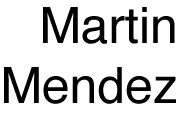Partners
M Mendez, Pablo Bordino, Howard C. Rosenbaum, Randall Wells, and Ajit SubramaniamFundacion AquaMarina, Sackler Institute for Comparative Genomics at the American Museum of Natural History , the Ocean Giants Program at WCS, Chicago Zoological Society, Sarasota Dolphin Research Program, Fundación Vida Silvestre Argentina, and the World Wildlife Fund.
Synopsis
In this ongoing research we are focusing on implementing genetic tools for assessing fine-scale population structure, demographics, evaluating some of the most important impacts of by-catch, and uncovering environmental agents to cetacean dispersal.Using mitochondrial DNA data, we are using a combination of classical and novel genetic and statistical approaches to gather information on gene flow, genetic structure, and movement patterns (published in Conservation Genetics
 ).
).
Further, by evaluating mitochondrial and microsatellite data in a comprehensive, and spatially explicit, environmental framework, we are investigating environmental agents that may promote or prevent dispersal, and therefore influence population structure (published in Molecular Ecology
 , and featured in science and news outlets such as Reuters, MSNBC, Nature, LiveScience, EurekAlert, among others).
, and featured in science and news outlets such as Reuters, MSNBC, Nature, LiveScience, EurekAlert, among others). We are also interested in the use of genetic data and inference tools to aid the evaluation of by-catch impacts. Our genetic approach allows us to make robust inferences about some important demographic issues, such as population growth or decline. It is imperative to gather information on the demography and genetic identity of the impacted groups in order to understand the magnitude of by-catch (published in PLoS ONE
 , and featured in Discovery News, MSNBC, EurekAlert, e Science News, and other media outlets).
, and featured in Discovery News, MSNBC, EurekAlert, e Science News, and other media outlets).

